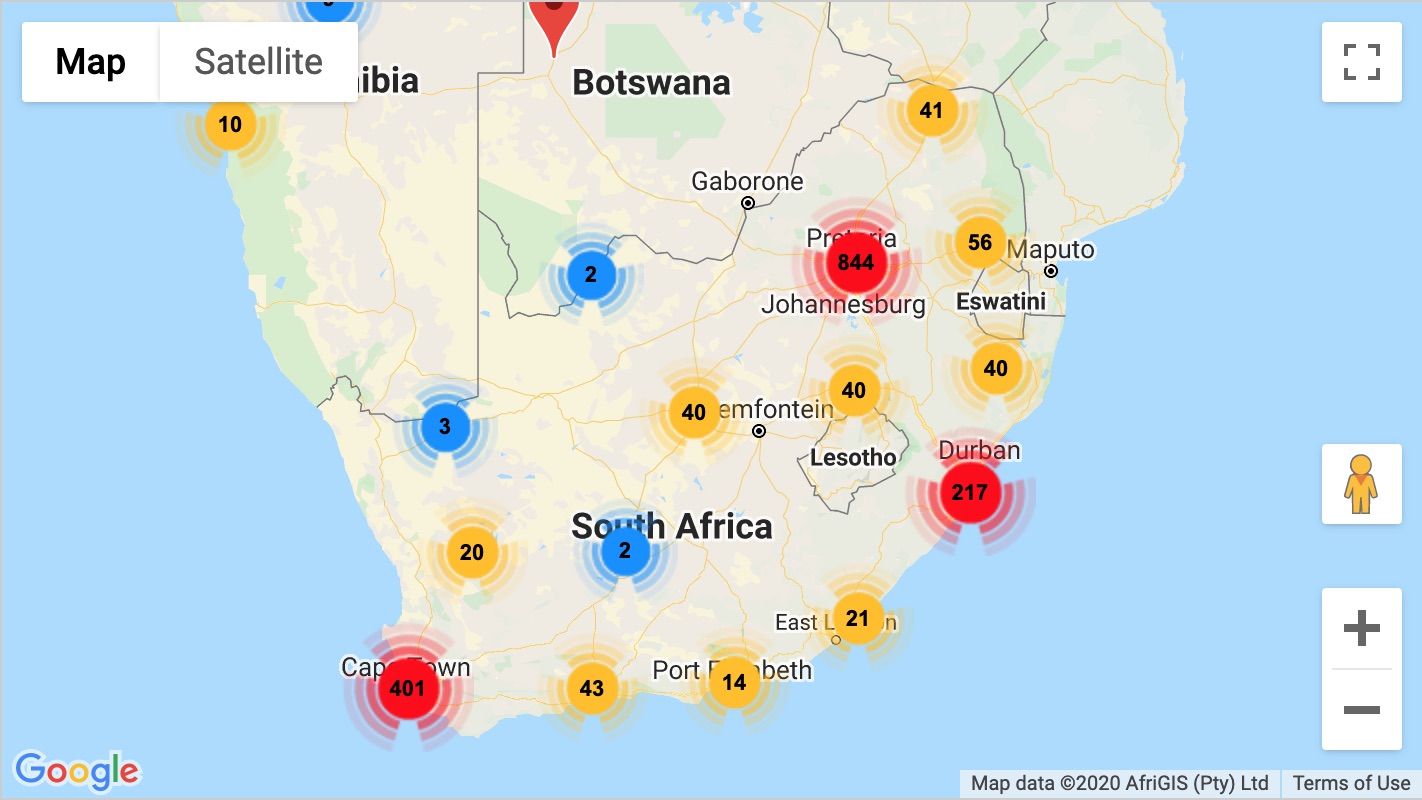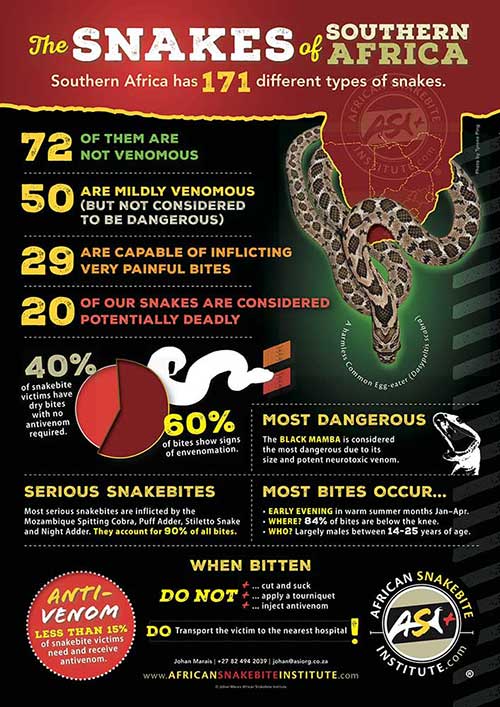PLEASE NOTE. Our offices will be closed from the 12th of December 2025 – until the 5th of January 2026. Last date for orders will be the 8th of December 2025. Any orders placed after the 8th of December 2025, will only be dispatched after the 5th of January 2026.
Scorpions of Kruger National Park
South Africa has around 108 different types of scorpions. The vast majority occur in the dry western regions of South Africa. Around the Kruger, there is only one scorpion that may be life-threatening, but a couple of other species can still deliver an incredibly painful sting.
Scorpion stings are quite common in the area – often occurring at night when scorpions are active. Scorpions also become more active during the rainy season when there is a higher density of insects and other food for the scorpions. Most stings happen when we stand on scorpions at night, either barefoot or in flip-flops and sandals. Always best to wear closed shoes outside at night and use a torch to see what is on the path. Many scorpions live in the cracks of wood or beneath loose bark and if accidentally squashed, while picking up the wood, they may sting. We also see a large number of stings where scorpions are hiding in clothing, towels and bedding and sting when they are squashed.
Most scorpion venom is neurotoxic, affecting the breathing in serious stings. Additionally, the venom appears to cause hypersensitivity in the nerves and incredible amounts of pain in many of the stings. Most stings are not life-threatening, and the pain should subside within a few hours, usually leaving some tingling sensation around the sting site, and some sensitivity that may last a few days.
First aid may consist of pain killers or topical anesthetics to easy pain which should subside within a few hours. Ice is not recommended as it often causes more pain to the already-sensitive nerves. For potentially life-threatening species like the Transvaal Thicktail Scorpion, it is important to get to a medical facility as soon as possible. You can contact the African Snakebite Institute (+27 82 494 2039) or the Poison Information Helpline (0861 555 777) for any emergency stings.
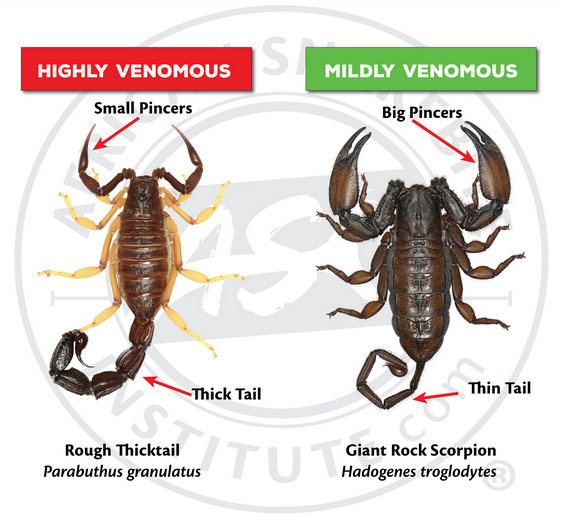
Below are the eight most common scorpions in the area, their habits and venom.
Transvaal Thicktail Scorpion (Parabuthus transvaalicus) – Highly Venomous
A large black to purplish scorpion with a massive, thick tail. These scorpions can reach 12cm in length with the tail extended. They are one of the most common scorpions in the area and may be found beneath rocks and logs during the day, or active at night moving around open sandy patches in search of insects. The sting is incredibly painful and potentially life-threatening. It is best treated in a hospital where they will attempt to control the pain and assist the breathing. Antivenom is effective against the venom of this scorpion.
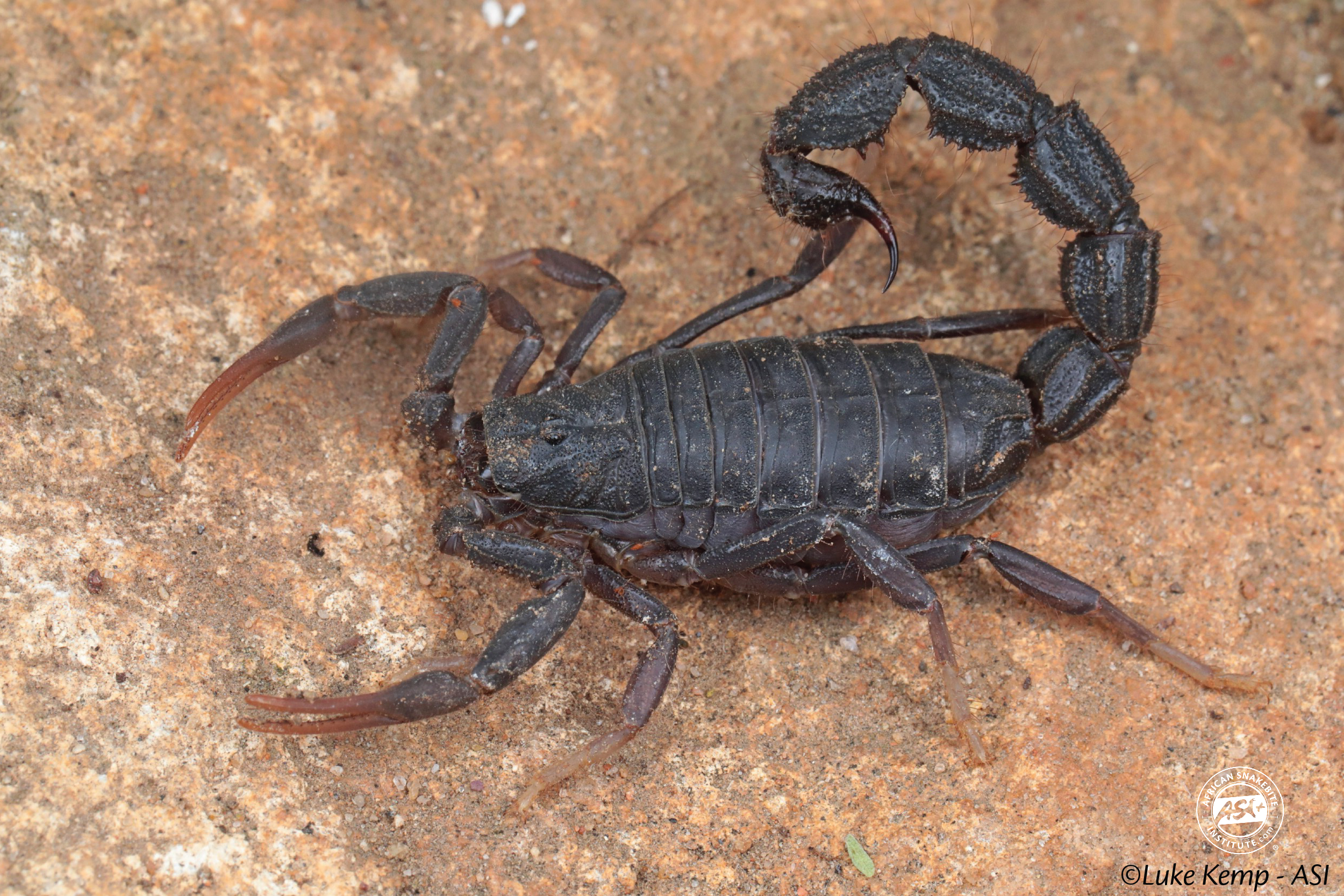 The Transvaal Thicktail Scorpion is a large scorpion and easily identified by the large tail and dark colour.
The Transvaal Thicktail Scorpion is a large scorpion and easily identified by the large tail and dark colour.
Mozambique Thicktail Scorpion (Parabuthus mossambicensis) – Venomous
A medium sized orange to brownish scorpion usually with a darker back. This scorpion reaches around 7 cm in length with the tail extended. They are common in the central and northern parts of Kruger, often found climbing trees and bushes or moving on the ground in sandy areas. The sting is incredibly painful but not considered life-threatening. For small children it may be worth treating the sting in a hospital. For adults the sting requires pain management and rest.
 The Mozambique Thicktail Scorpion is easily identified by the large tail and yellow to orange colour.
The Mozambique Thicktail Scorpion is easily identified by the large tail and yellow to orange colour.
Olive Lesser-thicktail Scorpion (Uroplectes olivaceous) – Mildly venomous
A small scorpion that is olive-blue to black with some orange to yellow bands on the legs. These scorpions are under 5 cm in length with the tail extended. They are often found under the bark of trees and beneath logs and rocks. This species accounts for the majority of stings in the Lowveld area, as they often end up in houses and clothing. Many people panic, thinking this is a Transvaal Thicktail Scorpion. The pain may last for a few hours before subsiding. The sting is not life-threatening and does not require hospitalization.
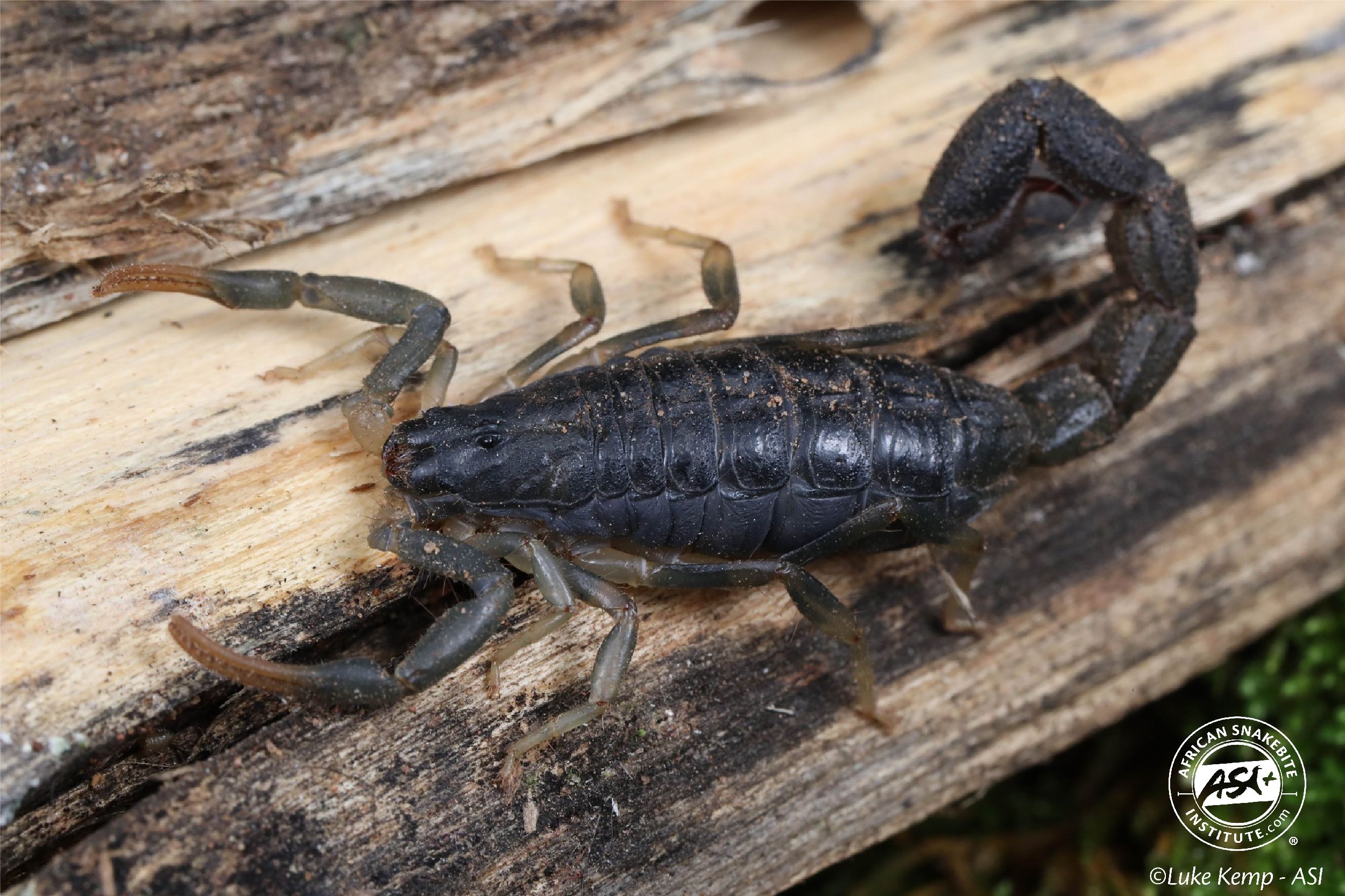 The Olive Lesser-thicktail Scorpion is very common in the Kruger area and accounts for the majority of stings. It is common in buildings and often hides in towels, clothing or bedding and stings when it is squashed.
The Olive Lesser-thicktail Scorpion is very common in the Kruger area and accounts for the majority of stings. It is common in buildings and often hides in towels, clothing or bedding and stings when it is squashed.
Eastern Bark Scorpion (Uroplectes vittatus) – Mildly venomous
A small slender scorpion that is yellow to orange with black patterns on the back and a dark V-mask on the head. These scorpions may reach 5 cm in length and have smallish pincers with a long tail. They live beneath the loose bark of trees, as well as in cracks in logs and dead trees. Stings are common when dealing with firewood and cause reasonable pain, which may take a few hours to subside. It is not a medical emergency.
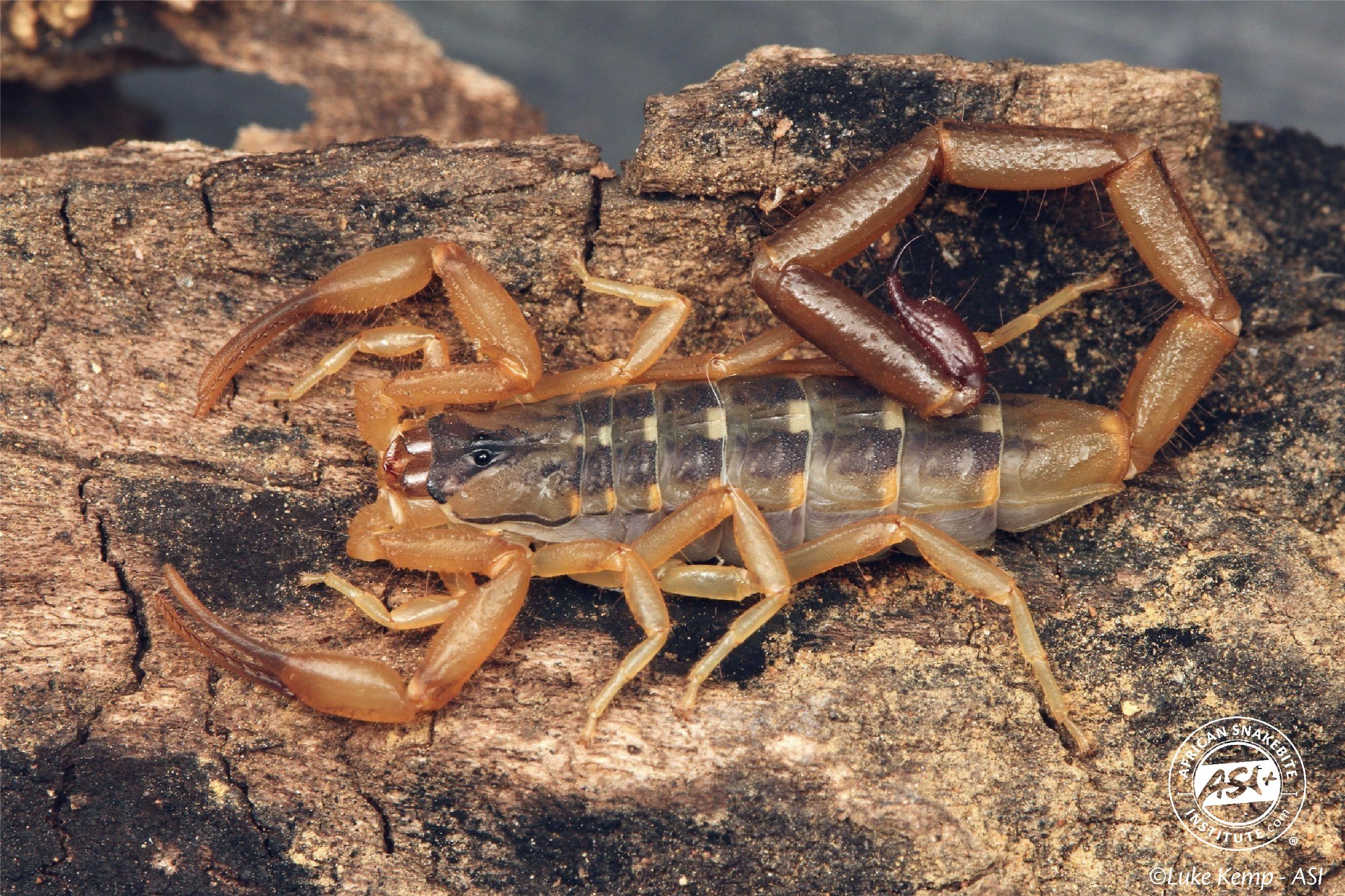 The Eastern Bark Scorpion is very common in trees under loose bark. The long tail segments and dark V-mask over the eyes are a good feature to identify them.
The Eastern Bark Scorpion is very common in trees under loose bark. The long tail segments and dark V-mask over the eyes are a good feature to identify them.
Rough Burrowing Scorpion (Opistophthalmus glabrifrons) – Mildly venomous
A large scorpion reaching 10 cm in length, with thick pincers and a slender tail. Colour is brownish to tan with black pincers. As the name suggests, these scorpions dig oval-shaped burrows into sandy flats. They are active at night moving around in search of insects and other prey and are frequently found crossing roads and may enter houses. The venom causes reasonable pain that may last a few hours before subsiding.
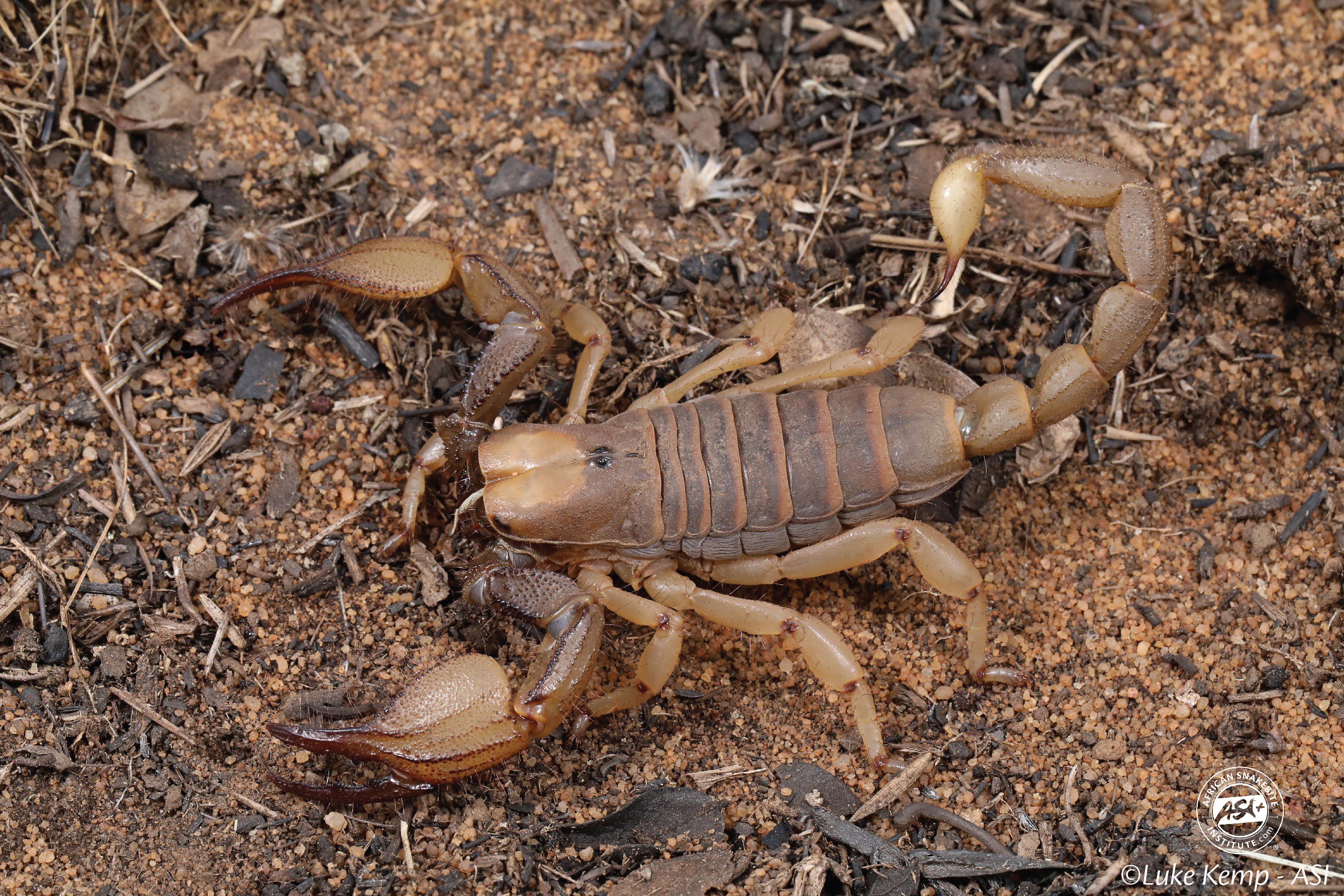 The Rough Burrowing Scorpion is a large scorpion with big pincers. It may be seen active at night, especially after decent rain.
The Rough Burrowing Scorpion is a large scorpion with big pincers. It may be seen active at night, especially after decent rain.
Tree Creeper (Opisthacanthus asper) – Mildly venomous
A medium to large scorpion that is black in colour with yellow to orange legs. These scorpions may reach 8 cm in length. The pincers are notably large, with a thin tail. They predominantly live beneath loose bark or hollows in trees. At night they may be seen on trees actively hunting or with the pincers protruding from a crack. The sting may be painful but should subside within an hour or two and is not dangerous.
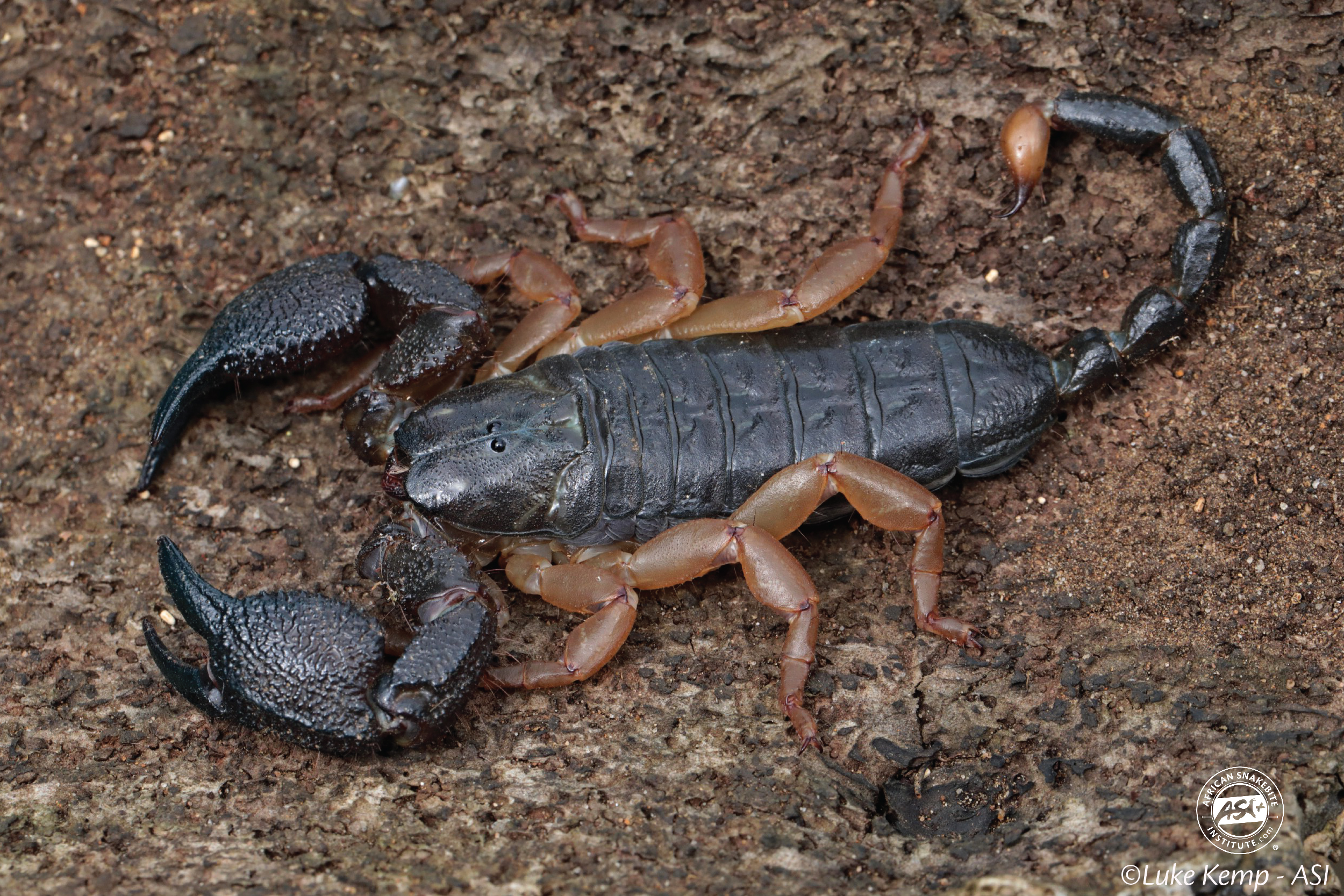 The Tree Creeper lives beneath the bark of dead trees and logs. They may occasionally be found on walls inside buildings.
The Tree Creeper lives beneath the bark of dead trees and logs. They may occasionally be found on walls inside buildings.
Jones’s Creeping Scorpion (Cheloctonus jonesii) – Mildly venomous
A medium scorpion that is black in colour with lighter legs. As it largely lives down burrows, it frequently is covered in mud or dirt. These scorpions may reach 7 cm in length and have large pincers with a thin tail. The sting may be painful but should subside within an hour or two and is not dangerous.
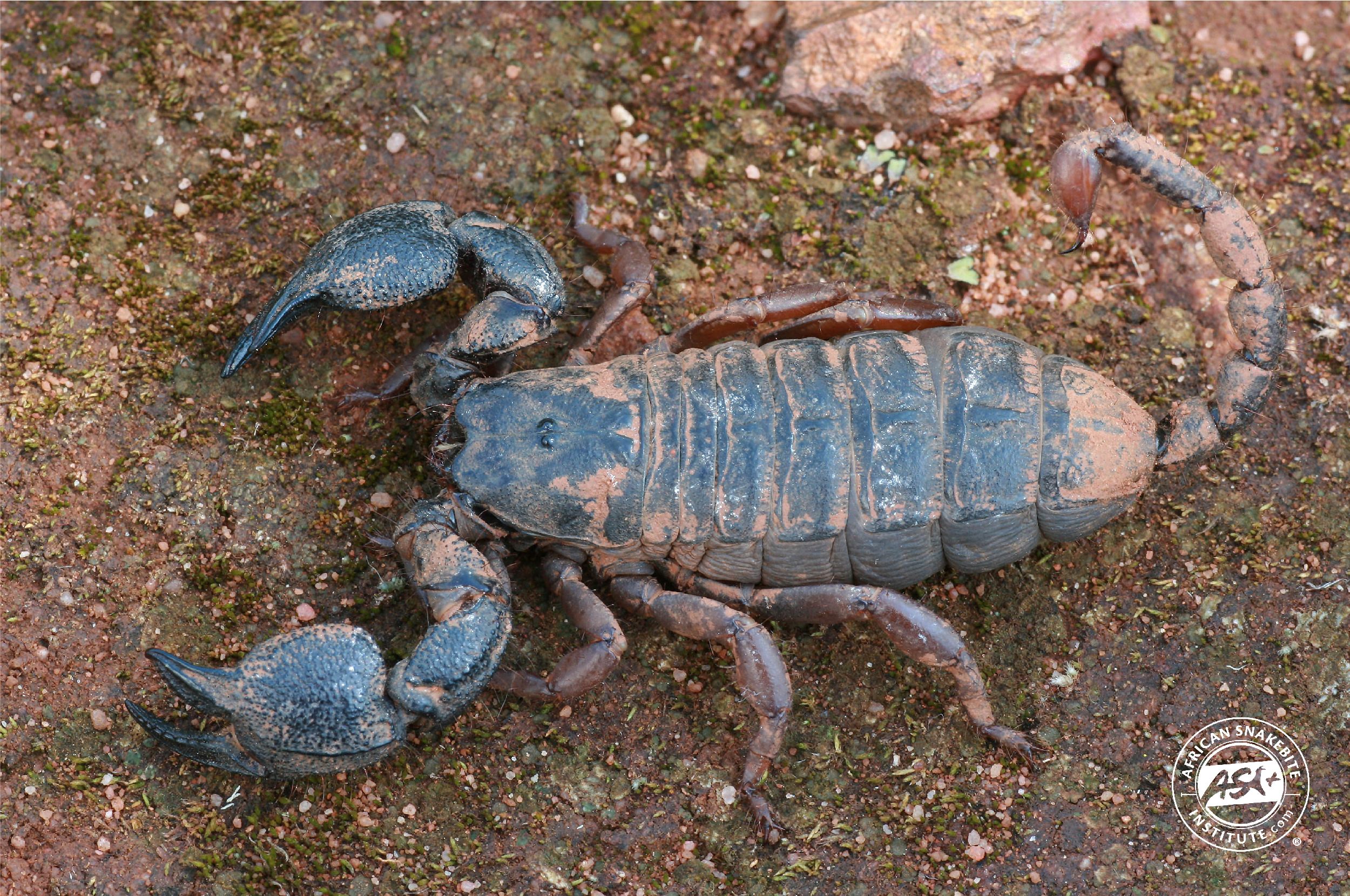 Jones’s Creeper builds burrows in compact soil. They can be found on the ground at night hunting insects.
Jones’s Creeper builds burrows in compact soil. They can be found on the ground at night hunting insects.
Giant Rock Scorpion (Hadogenes troglodytes) – Mildly venomous
The largest scorpion in Africa, reaching up to 21 cm with the tail extended in males. Colour is brown and grey with large pincers and a notably thin tail. These scorpions are generally found in rocky areas where they may be found in rock cracks or beneath rock slabs. They have occasionally been found on the outside walls of buildings (especially rock walls) at night. The venom is weak, and the sting is a slight prick with mild burning, which fades rapidly.
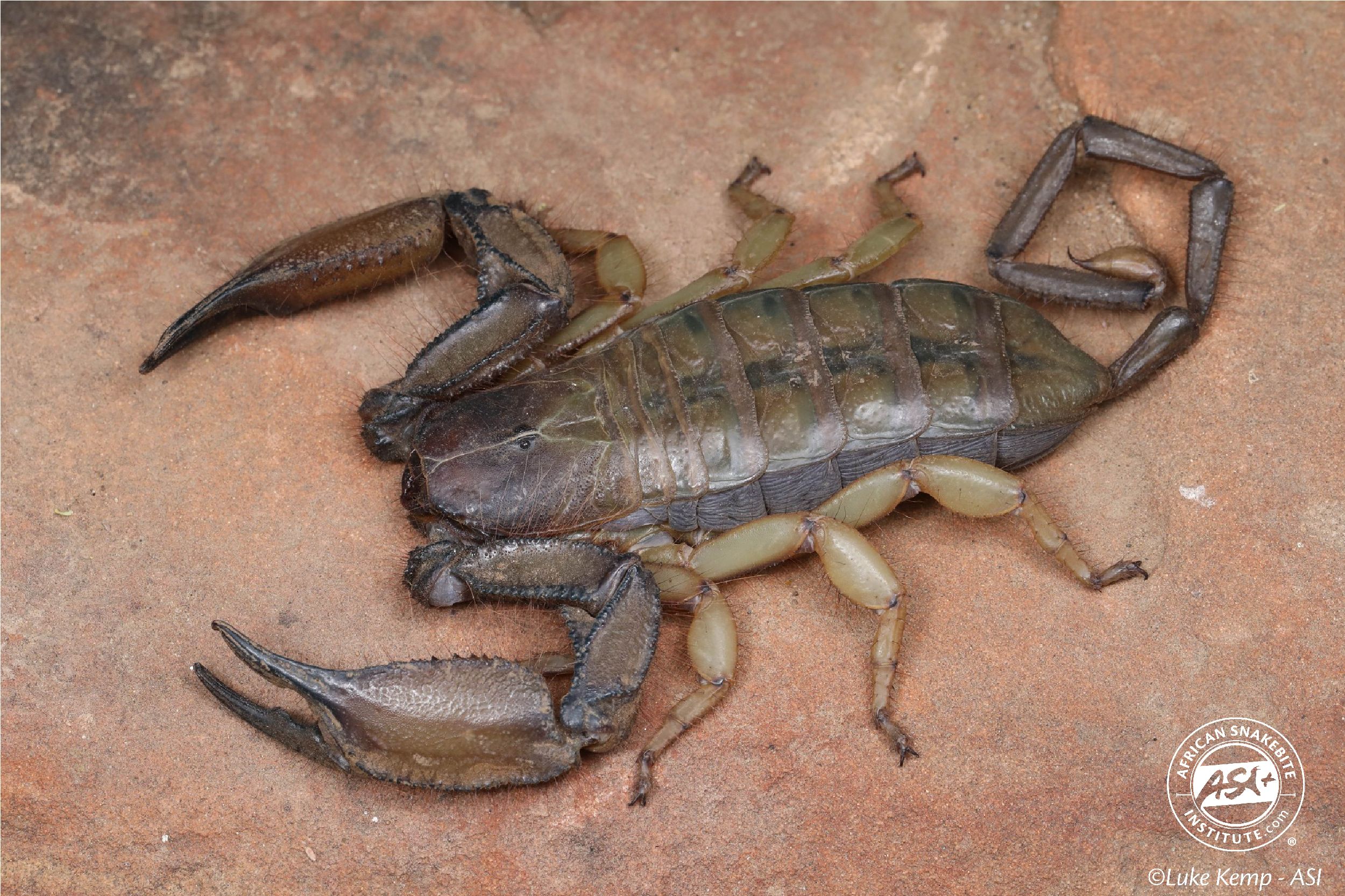
Although fairly common, the Giant Rock Scorpion is not often seen as it hides in crevices and cracks in rocks.
Stings by most scorpions are painful, but the pain fades after a few hours. For highly venomous species it is best to keep the victim immobile and transport them to a hospital as soon as possible. Some people suggest applying ice to the sting, however scorpion venom often makes the sting site hypersensitive, and ice may cause additional pain. Some painkillers or anesthetic ointment can be taken for the sting. The majority of stings are not dangerous, and the person should be fine within a few hours.
It is a always best to try avoid scorpion stings as far as possible. If walking around at night, wear closed shoes and use a torch to spot scorpions on the ground. Be careful when picking up rocks or logs and branches, as scorpions like to hide under these. It’s advisable to learn how to identify local species, to avoid unnecessary stress (and trips to the hospital) when stung by the lesser venomous species. You can use the free ASI SNAKES app to see scorpions of southern Africa.
Search
Shopping Cart
CONTACT US:
Product enquiries:
Caylen White
+27 60 957 2713
info@asiorg.co.za
Public Courses and Corporate training:
Michelle Pretorius
+27 64 704 7229
courses@asiorg.co.za
Featured Products
-
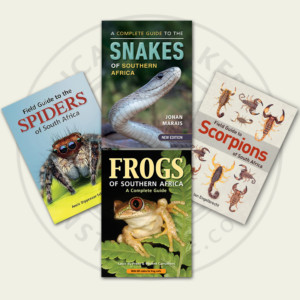 Rangers Book Combo 2
Rangers Book Combo 2
R2,080.00Original price was: R2,080.00.R1,870.00Current price is: R1,870.00. -
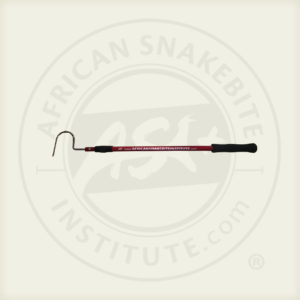 ASI Collapsible Snake Hook - 1.2 m
R650.00
ASI Collapsible Snake Hook - 1.2 m
R650.00
-
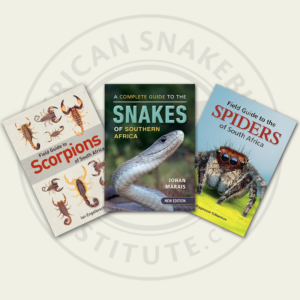 Rangers Book Combo 1
Rangers Book Combo 1
R1,450.00Original price was: R1,450.00.R1,305.00Current price is: R1,305.00.
